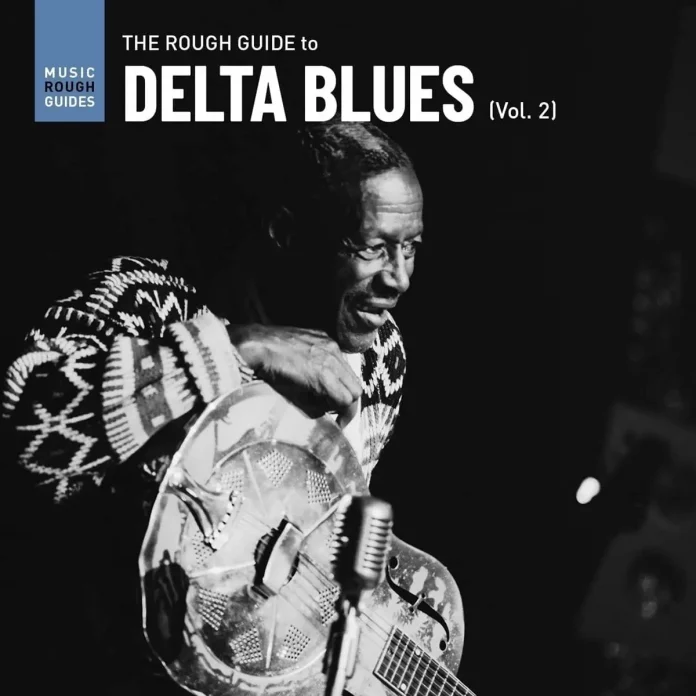If you want a quick introduction to any genre of world music, then Rough Guides are your first choice. They are well researched and easily digested, like a tasty quick snack. For many people that will be more than sufficient, but if not, there are plenty of other menu options available. For example, for those wanting to progress to the next level of knowledge in the blues, the Bluesmaster Series from Nimbus takes some beating as does Alan Lomax’s The Land Where The Blues Began.
The liner notes are not extensive but explain why the Mississippi Delta area and Clarksdale were home to one of the most enduring forms of popular music. Born out of poverty and enslavement, the blues had its origins in Africa, the cotton fields and the need for the human spirit to survive the most oppressive of tyranny. Music was a release. Whilst the church offered sanctuary in the next life, the blues offered some small salvation in this one.
The selection of artists is adequate for a quick guide, albeit little is written about each musician and why they have been included. Regrettably, a blues musician’s place in the history of the blues seems now to have more to do with the quality of the recordings he or she left behind rather than pure talent. The better the recordings, the greater the chance of longevity. That is one reason why Bessie Smith is perceived as a greater talent than Ma Rainey.
My one criticism of the guide is that it perpetuates the old cliché that blues was a man’s world and a woman’s singing was confined to the church. Memphis Minnie and Mattie Delaney are the only females represented on this selection and that is not a true reflection of musical life in the delta at this time. Whilst male musicians did outnumber female, that does not mean that the role of women in the development of delta blues was inferior. That myth has been created in no small part by the fact that those who controlled the so called “race record” industry and those who wrote the history of the delta blues were male. Otherwise, this is a good offering for those with limited time, interest or appetite.
Discography
District Attorney Blues; Fare Thee Well Blues; Can I Do It for You?; Cherry Ball Blues; Little Leg Woman; Shake ’Em On Down; Good Boy Blues; It’s Killin’ Me; Down The Big Road Blues; Shake It And Break It (But Don’t Let It Fall Mama); Rollin’ Stone – Part 1; Overcome Some Day; Maggie Campbell Blues; Happy Home Blues; Dry Spell Blues – Part 1; Pony Blues; Ham Hound Crave; All Night Long Blues; Saturday Blues; Vicksburg Stomp; Future Blues; Cottonfield Blues – Part 1; Grand-Daddy Blues; Mississippi Moan; Big Boat Whistle; Mississippi Bottom Blues (78.53)
Featuring, respectively: Bukka White; Joe Callicott; Memphis Minnie & Kansas Joe; Skip James; Big Joe Williams; Bo Carter; Arthur Petties; Willie “Poor Boy” Lofton; Mattie Delaney; Charlie Patton; Robert Wilkins; Mississippi Bracey; Tommy Johnson; Mississippi Matilda; Son House; Sonny Boy Nelson; Rube Lacey; Louise Johnson; Ishman Bracey; Mississippi Mud Steppers; Willie Brown; Garfield Akers; Jelly Jaw Short; The Mississippi Moaner; Johnnie Temple; Kid Bailey. No individual recording dates or locations given.
Rough Guides RGNET141















